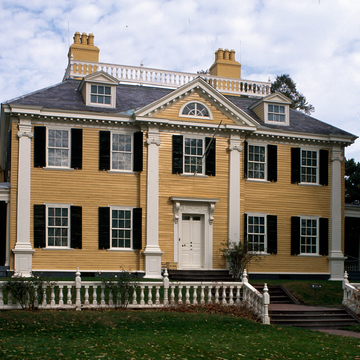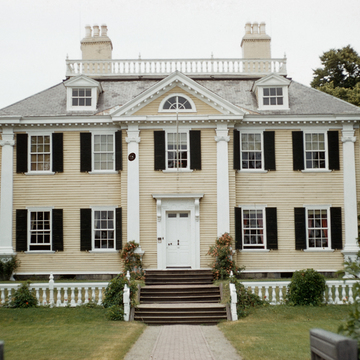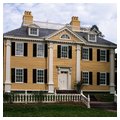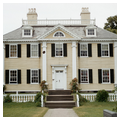One of the finest mid-Georgian houses in Cambridge and later the home of poet Henry Wadsworth Longfellow, this house is a National Historic Landmark for several reasons. John Vassall built the house in 1759 as the
Across Brattle Street from the Vassall-Craigie-Longfellow House extends the Longfellow Memorial Park (NRD/LHD), designed in 1887 by Charles Eliot for the Longfellow Memorial Association. The section closest to Brattle Street forms a narrow common flanked by later buildings. At the far end of this greensward, the land drops to a lower and more informal garden. At the juncture of these two sections stands a memorial (1914) to Longfellow, the work of sculptor Daniel Chester French and architect Henry Bacon. In 1887, Longfellow's daughters built Colonial Revival houses for themselves on adjacent lots. Andrews and Jaques designed the Edith Longfellow Dana House (113 Brattle, NRD/LHD), a symmetrical shingled residence with suggestions of seventeenth-century forms, seen in the overhangs of the twin front gables. Alexander Wadsworth Longfellow, the poet's nephew, designed the Annie Longfellow Thorp House (115 Brattle, NRD/LHD), combining Georgian and Federal elements partly derived from the Vassall-Craigie-Longfellow House.


















